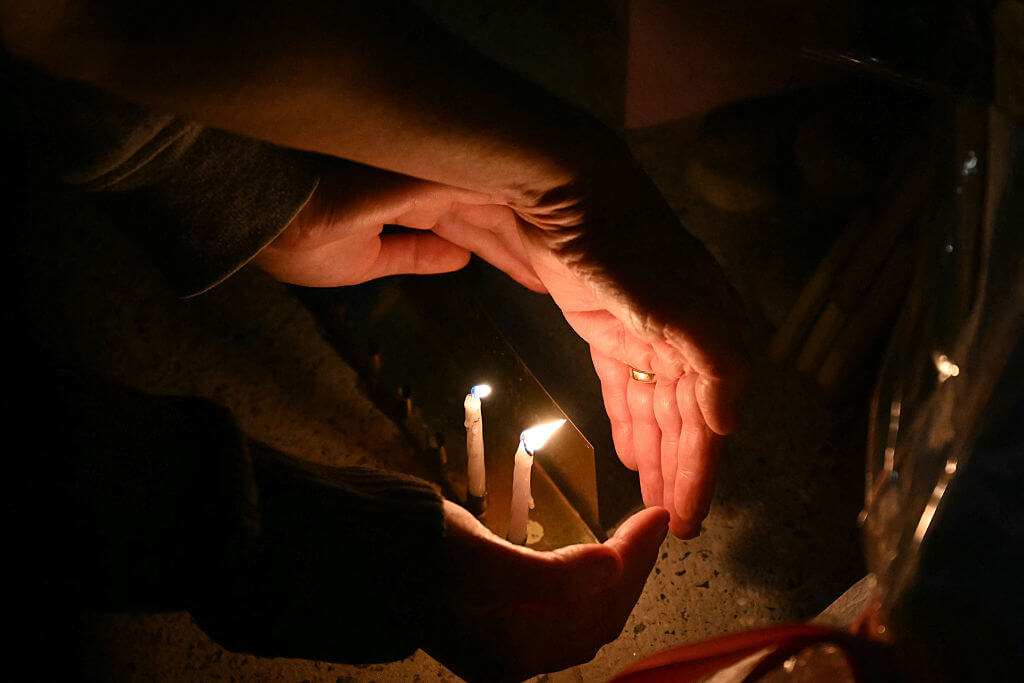How Kindertransports Saved My Family

Graphic by Angelie Zaslavsky
When her parents escorted 16-year-old Alice, my aunt, to the Vienna train station, her father was crying. Her mother on the other hand, remained strong and optimistic. “She said, ‘We’re going to see each other again,’” Alice, nicknamed Lizzie, remembered. ”And I was like, I’m going to England, and I’ll be able to improve my English.”
Seventy-five years ago today, on December 2, 1938, the first “Kindertransport” arrived from Germany in England. In the nine months that followed, around 10,000 children — including Lizzie — from Nazi-occupied areas travelled to England, and were placed in foster families, schools and shelters. British authorities agreed to grant visas, while private citizens and organizations had to find guarantors for the children up to the age of 17.
When Lizzie arrived, a doctor’s family from Liverpool took her in for half a year. When they moved to a smaller house, she was passed along to another foster family. Meanwhile, her father, a Jewish carpenter, managed to get his hands on a New York phone directory, and reached out to a cousin, who sent an affidavit and tickets for a ship. Once they had arrived in New York, they organized Lizzie’s passage. In June 1940, she arrived in the United States.
“It was incredible, so beautiful,” said Lizzie, who is now 91 and lives in Valley Stream, NY. She has remained in touch with her foster family in Liverpool, who treated her with respect and love, and is grateful to the people who took children they didn’t know into their families.
Lizzie left Vienna with her maternal cousin Fritz, who immigrated to Australia soon after his arrival in England. Ilse, Fritz’s younger sister, had left Vienna a few months earlier, and found refuge at a Quaker boarding school in the south of England.
“I came without knowing a word of English,” Ilse, now 87 and living in London, said. “It was very traumatic.”
Her father had died earlier that year. Her mother remained behind in Vienna. Also trapped were her maternal cousins, Hans and Herbert, as well as their parents. Having lost the family business — a furniture store — they had no money left to flee the country and were unable to get on a Kindertransport of their own.
In the fall of 1942, the remaining family members received a deportation notice. A family friend, a non-Jewish pediatrician, offered to hide Hans and Herbert in his Vienna apartment, risking his own life to help them. Herbert, who was 14, didn’t want to leave his parents, but 16-year-old Hans, my grandfather, agreed.
When the end of the war came, Ilse received a letter from Hans. “I thought ‘That’s the first one.’ I went to the hockey field, because I wanted to be alone to read it,” she said.
“I was shocked. It was the first one, and the last one, because no one else had survived.”
__Jewish history is one long story of seeking refuge. From Hitler’s Berlin to Soviet Moscow, from fundamentalist Teheran to chaos-ridden Addis-Ababa — read more of Jewish refugees’ stories here._
Anna Goldenberg is the Arts and Culture intern at the Forward. She also writes about Jewish issues and science for various Austrian publications. Follow her on Twitter @angoldna.
















